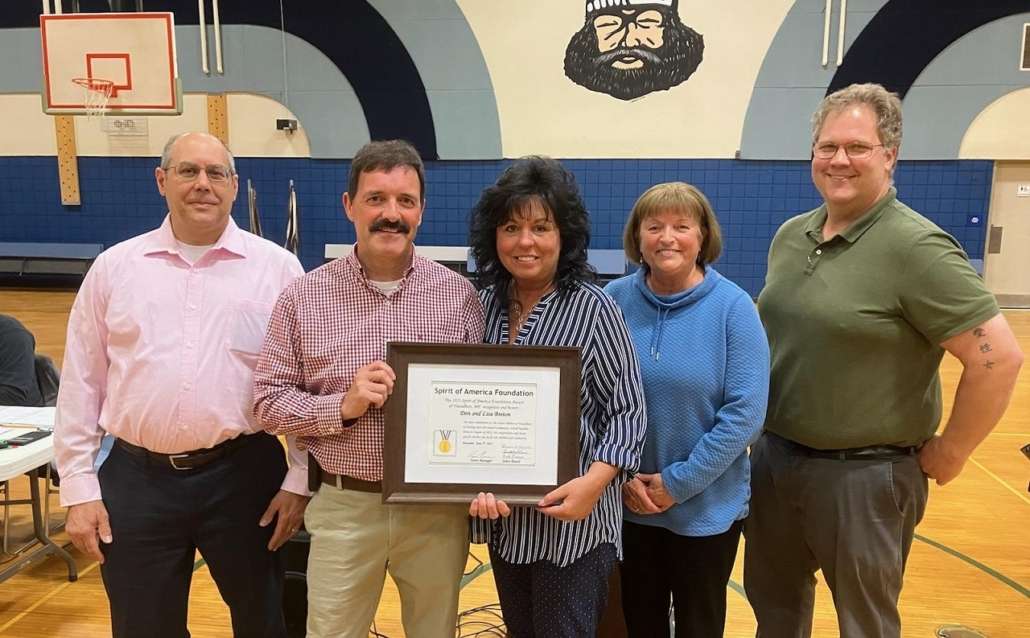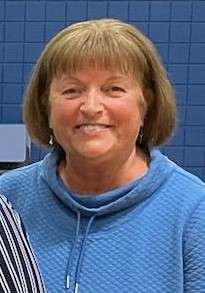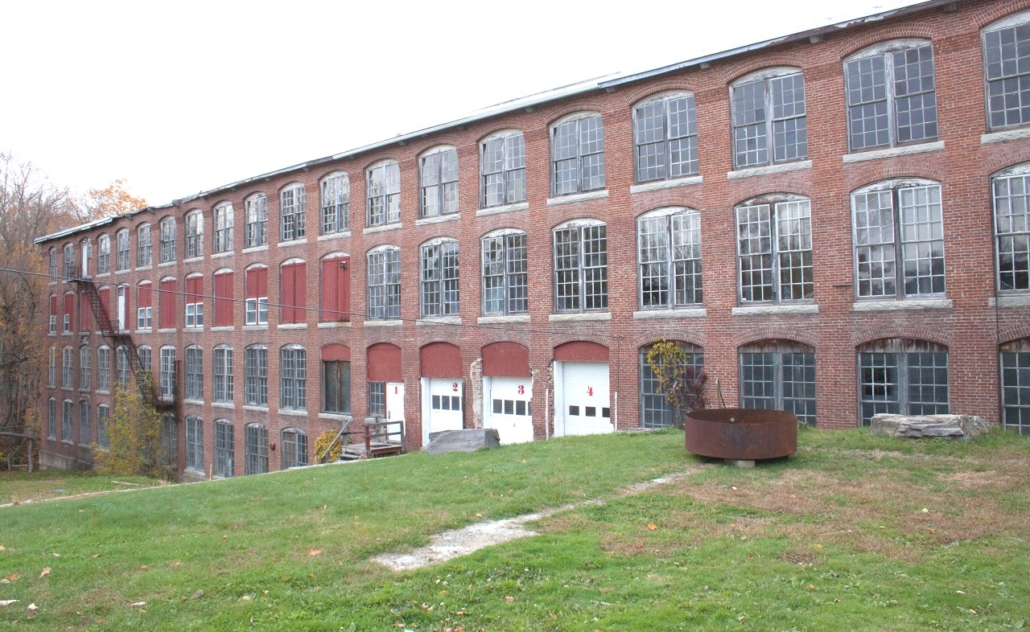Redmond thanked for many years of service on Vassalboro select board
/0 Comments/in News, Vassalboro/by Mary Grow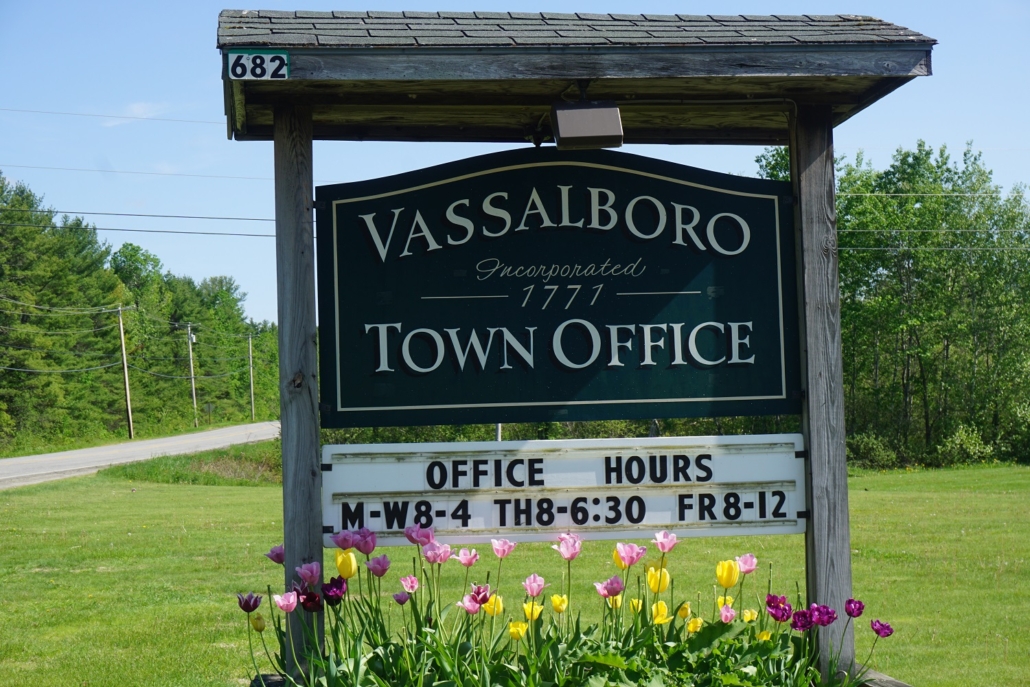 by Mary Grow
by Mary Grow
Vassalboro select board members discussed a variety of items at their June 8 meeting, the last for retiring board chairman Barbara Redmond.
Senior board member Chris French thanked Redmond for her service, to applause from the audience in the town office meeting room. Redmond expressed her appreciation to the town’s “small, small staff who get a lot done.”
Redmond then raised an issue on behalf of her road association members: the accumulation of “dog poop” at the Webber Pond boat landing. There was an earlier decision not to put trash cans there, fearing overuse; now, residents suggest a sign and plastic bags.
With no trash can, resident Joe Presti said, dog-walkers will leave bags all over the place. Town Manager Aaron Miller, smiling, asked if the bags should be considered a memorial commemorating Redmond’s service on the select board.
Board members and Miller will consider the issue.
The meeting began with opening of 18 bids for the tax-acquired property at 83 South Stanley Hill Road. The first one opened was from Mark Grenier, owner of Grenier Properties, in South China, for $112,000; the next highest was $83,210. Board members accepted Grenier’s bid.
Resident Amy Davidoff presented an update on broadband access in Vassalboro, a topic she has followed for the last few years. She has explored options for improvement in the parts of town that lack adequate service.
One option is cooperation with the Town of China, which is working with UniTel, in Unity, now a subsidiary of Idaho-based Direct Communications. Davidoff reported that Direct Communications intends to apply for Maine grant funds for China and is “interested in including the underserved areas of Vassalboro” in the application.
She invited select board members to send a letter of interest to UniTel. The letter would not obligate Vassalboro in any way; but it would let Direct Communications engineers evaluate Vassalboro’s needs, she said.
French and Redmond authorized Miller to send the letter of interest. Board member Frederick “Rick” Denico, Jr., was not present June 8.
The two board members also authorized Miller to pursue a community resilience grant, through a state program designed to help municipalities reduce emissions and otherwise combat or adapt to climate change.
Miller gave updates on three issues from the board’s May 25 meeting (see the June 1 issue of The Town Line, p. 3).
- He had a meeting scheduled June 14 with people from the state Department of Transportation and the Vassalboro Sanitary District to talk about manhole covers in Main Street, in North Vassalboro.
- State revenues paid to local school districts are based on two-year-old figures, so a valuation increase in 2023 will have no immediate impact on state funding for the Vassalboro school department.
- Vassalboro’s year-end budget still looks good, “pretty much where we thought we would be.”
The next regular Vassalboro select board meeting is scheduled for Thursday evening, June 22. The town office will be closed Monday, June 19, for the Juneteenth holiday.
VASSALBORO: Voters have two written ballots on June 13
/0 Comments/in News, Vassalboro/by Mary Grow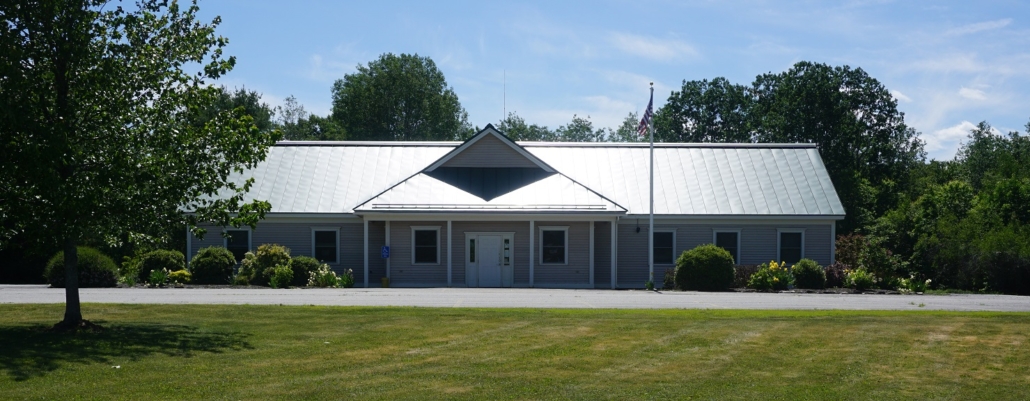 by Mary Grow
by Mary Grow
Vassalboro’s annual town meeting did not end after voters acted on 38 articles Monday evening, June 5. They have two written ballots on Tuesday, June 13, with polls open from 8 a.m. to 8 p.m. at the town office.
One ballot is for local elections, for one member of the select board and two members of the school board.
For select board, there are only blank lines. Michael C. Poulin, of Vassalboro, is a declared write-in candidate. Incumbent Barbara Redmond is retiring.
For school board, incumbents Erin L. Loiko (“Libby”) and Zachary Smith seek re-election. There are two blank lines if a voter wants to write in someone else instead of one or both of those listed.
Instructions for write-ins are printed on the ballot.
The other ballot contains warrant Articles 39 and 40.
Art. 39 asks if voters want to approve the 2023-24 school budget that was adopted June 5. This school budget validation referendum has been standard in many Maine municipalities for years.
Art. 40 asks if voters want to amend Vassalboro’s Site Review Ordinance. If a majority approve, they will add to the ordinance a new Chapter XI titled “Performance Standards for Commercial Solar Energy Systems.”
The ordinance with proposed amendments is on the Town of Vassalboro website, under “What’s New in Vassalboro,” after several other items; it immediately follows the announcement of new Facebook and Instagram pages.
In the draft, the new section covers pages 18 through the top of 22. It sets out standards for building, operating, maintaining and decommissioning commercial solar farms.
Approval of the amended ordinance includes numerous lesser changes outside Chapter XI. Some complement the provisions dealing with solar farms – for example, chapters after XI are renumbered, and new definitions of “commercial solar energy system” and “solar energy system” are proposed.
Other changes clarify procedures or correct past omissions. For example, voter approval would add a requirement that a site plan application include the names of abutting property-owners. It would add definitions of multiple terms not specific to Chapter XI, like “buffer,” “property line,” “residential structure” and “setback.”
EVENTS: Senior Seminar to be held in Vassalboro
/0 Comments/in Community, Events, School News, Vassalboro/by Website EditorA Senior Seminar, hosted by Gateway Retirement Solutions, will be held at The Mill, 934 Main St., in North Vassalboro, on Wednesday, June 21, from 9:30 a.m. to noon.
The seminar will cover Medicare parts A, B, C, and D, prescription coverage and how to compare different plans. What to do with a 401k upon retirement, and what are better options.
Speakers will be Jessica Cole, Medicare broker, life insurance broker and CoverMe broker; David Godfrey, financial advisor, and Brian Arsenault, property and casualty broker.
VASSALBORO: Public safety, recreation draw most of town meeting discussion
/0 Comments/in News, Vassalboro/by Mary Grow by Mary Grow
by Mary Grow
Voters at Vassalboro’s annual town meeting devoted most time to two sections of Article 6, the article asking for more than $2.7 million for 14 town departments. The two sections were the public safety department, for which the select board recommended $102,108 and the budget committee recommended $94,189; and the recreation program, for which both boards recommended $65,898.
At issue in the public safety request was whether Police Chief Mark Brown should have increased hours, from 15 to 20 per week, and a commensurate pay increase. The majority of select board members said yes, the majority of budget committee members said no.
The main arguments in favor were that crime is increasing state-wide while law enforcement personnel are getting harder to find, and Brown does a variety of jobs, like providing back-up for the codes enforcement officer if needed and, Town Manager Aaron Miller said, responding when residents find drug paraphernalia strewn on their lawns.
The main arguments against were that with both state police and sheriff’s deputies available, Vassalboro doesn’t need more local law enforcement; and some of what Brown does, like delivering documents for the town office (including posting copies of the town meeting warrant), could be done by others.
Budget committee member Donald Breton said select board members plan to update the police chief’s job description. Give us a year, he asked, to determine what the job should include and how much time it requires.
After a vote on the select board’s recommendation by a show of voting cards was too close for moderator Richard Thompson to call, he held a counted vote and ruled the recommendation was defeated.
Voters then approved the lower figure.
A voter’s motion to decrease the recreation budget by more than $14,000 was defeated by a lop-sided show of cards. Residents and officials said the expanded recreation program directed by China resident Karen Hatch is providing a variety of new programs for people of all ages.
Budget committee member Michael Poulin commended the “synergy” between the recreation department and the Vassalboro Public Library. Later in the meeting, school superintendent Alan Pfeiffer praised cooperation with Vassalboro Community School.
A third proposed expenditure that generated discussion was the request for funds for the China Region Lakes Alliance (CRLA), one item in Art. 26, which included $28,929 in requests from eight health and welfare agencies. For CRLA, the select board recommended $13,500; the budget committee recommended $7,500.
Holly Weidner, speaking for the Vassalboro Conservation Commission, said the money would be used to expand water quality protection programs for Webber Pond and Three Mile Pond. Vassalboro has participated in the Courtesy Boat Inspection program, intended to keep invasive plants out of Maine waters; other programs could offer advice and help in minimizing run-off and maintaining camp roads.
Weidner described CRLA as hired by the Conservation Commission to help that body “be proactive about preventing problems in our ponds.”
Voters approved the $13,500.
During a brief discussion before voters approved $66,285 for Delta Ambulance Service, Executive Director Timothy A. Beals explained that labor shortages, increasing costs and inadequate insurance reimbursements had compelled Delta to imitate other Maine ambulance services and begin charging a fee.
Of the 14 towns billed, only one, so far, had declined to pay, he said. Its contribution was small enough so the $15 per resident fee charged each town that does join remains unchanged.
Other articles were passed without discussion, individually, or, on motions by David Trask, in two large groups. One group, Articles 8 through 21, included smaller appropriations and a variety of authorizations for select board actions.
The other group, Articles 26 through 38, encompassed the entire $9 million 2023-24 school budget. Superintendent Pfeiffer spoke briefly; no one asked a question.
Budget committee members Donald Breton, William Browne, Phillip Landry, Peggy Schaffer and Dallas Smedberg were re-elected without challenge.
Close to 100 voters attended the meeting in the Vassalboro Community School gymnasium; it lasted slightly under two hours.
The town meeting continues with written-ballot voting on Tuesday, June 13, with polls open from 8 a.m. to 8 p.m. in the town office. Voters will be asked to:
- Approve or reject the school budget approved June 5;
- Approve or reject addition of a chapter dealing with commercial solar developments to the town land use ordinance; and
- Elect one select board member and two school board members for three-year terms.
Don and Lisa Breton presented with Spirit of America Award
At Vassalboro’s June 5 town meeting, retiring select board chairman Barbara Redmond presented this year’s Spirit of America award for volunteerism to Donald and Lisa Breton. She commended the Bretons for their fund-raising efforts for a variety of worthwhile projects in town, from the food pantry to the annual school supplies drive.
Poulin declares write-in candidacy for select board
/1 Comment/in Elections, Vassalboro/by Website Editor Michael C. Poulin has formally declared his candidacy as a write-in candidate for the Vassalboro Select Board.
Michael C. Poulin has formally declared his candidacy as a write-in candidate for the Vassalboro Select Board.
He has been a Vassalboro resident/taxpayer for 20+ years, U.S. Navy wartime veteran, member of Vassalboro Budget Committee, has been to 98 percent of selectboard meetings for years, attends most of the school board meetings, is a graduate of BSBA Suffolk University (1972), MBA Suffolk University 1992 (Summa), has been a 30-year assistant scoutmaster Boy Scout Troop #194 (Parent of Eagle Scout), is a patron of Vassalboro Free Public Library, associate member of Vassalboro Trails Committee, and is a patron of MPBN.
His work history includes Honeywell, Brown Brothers Harriman, Bank of Boston, various Senior Systems Analyst consulting gigs.
Poulin reminds voters to use his full name (Michael C. Poulin) to differentiate from the “other” Mike Poulin.
Vassalboro select board discusses money and looming problem with MDOT
/0 Comments/in News, Vassalboro/by Mary Grow by Mary Grow
by Mary Grow
Issues discussed at the May 25 Vassalboro select board meeting included money and a looming problem between the town and the Maine Department of Transportation (MDOT).
Town Manager Aaron Miller reviewed the current year’s budget as the June 30 end of the fiscal year approaches. He pointed out a potential overdraft in the administration budget, with enough left over in public works to offset it if board members so decide.
In summary, he said, “I think we’re in good shape.”
Town assessor Ellery Bane sent select board members notice that because of rising real estate prices, Vassalboro’s property assessments have fallen well below market value and the state assessment. By state law, state and local assessments cannot deviate too far without the town being penalized.
Bane proposed a 20 percent town-wide valuation increase. Select board members agreed in principle, but wanted to talk with school Superintendent Alan Pfeiffer to make sure there would be no unexpected effect on school funding if they supported 20 percent.
Taxes will not increase 20 percent, Miller said. The higher valuation will mean a lower tax rate will bring the same amount of money into town coffers, so most property-owners’ bills should be about what they would have been without the adjustment.
On a related topic, Miller said Vassalboro has not had a complete revaluation for 16 years; he recommended select board members consider setting aside funds to pay for one. The quarterly reviews Bane and his staff do, inspecting a quarter of the town’s properties each year, are to note changes, not to assess values.
The MDOT issues are related to the planned Route 32 (Main Street) work in North Vassalboro. Earlier in May, Miller emailed the department about the new covers on the Vassalboro Sanitary District (VSD) manholes in sections to be repaved and the town’s desire to keep granite curbing along Main Street.
A reply from MDOT engineer Robert K. Betz said that while MDOT is “obliged to accommodate utilities,” like the VSD, it cannot legally “be financially responsible for utility presence in highway easements.”
Therefore, if the manhole covers need to be changed to accommodate MDOT’s repaving, VSD will be responsible. Betz wrote that “it is likely that adjustments will be needed,” but he was not sure because the design of the work is not complete.
VSD head Raymond Breton was appalled. He said last year’s work to replace the manhole covers cost $400,000 and the District does not have the money to do it again.
Betz had not had time to consider the town’s request to keep granite curbing.
Miller said he intends to arrange a meeting among affected local parties and MDOT officials.
Select board member Chris French had three more assignments for Miller:
- Look into the legality of digital signatures for at least one select board member, in case no one is available when a signature is needed in a hurry;
- Find a contractor to work on the North Vassalboro fire station roof (Miller said nine contractors had refused the job so far); and
- Look into heat pumps for the town office (Miller said he intends to apply for a Community Resilience grant for that purpose).
The May 25 meeting was preceded by two public hearings that attracted one comment.
The first hearing was on proposed fees for local marijuana licenses. When board chairman Barbara Redmond asked for comments, there were none from the half-dozen people in the audience.
Redmond then opened the second hearing, on approved new application fees for site review permits, recommended by the planning board: $100 for a minor site review and $400 for a major site review.
“Good job,” said fellow select board member Frederick “Rick” Denico, Jr., who missed the previous meeting when the fees were approved (see the May 25 issue of The Town Line, pp. 2-3). There were no further comments.
The next regular Vassalboro select board meeting will be Thursday evening, June 8.
Before that is the open part of the annual town meeting, beginning at 6:30 p.m., Monday, June 5, at Vassalboro Community School. Local elections and other written-ballot voting will be held Tuesday, June 13, with polls open from 8 a.m. to 8 p.m. at the town office.
Absentee ballots for June 13 are available at the town office. The annual town report for FY 2022 is also available.
China town meeting, ATV trail discussed by select board
/0 Comments/in News, Vassalboro/by Mary Grow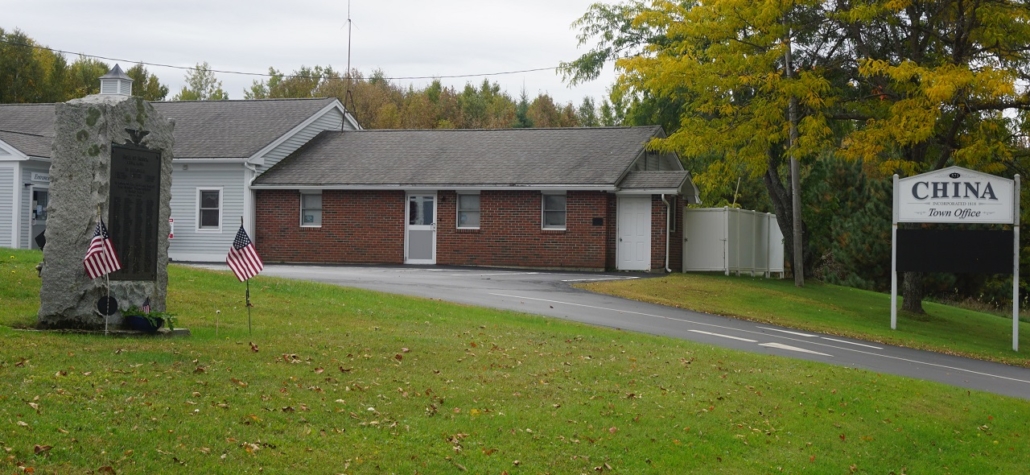 by Mary Grow
by Mary Grow
The first of the China select board’s May 22 public hearings, a repeat hearing on the June 13 town business meeting ballot (see the May 11 issue of The Town Line, p. 2) drew no interest at all.
The second hearing, on allowing about two miles of Pleasant View Ridge and Bog Brook roads to be used as an ATV trail, elicited half an hour’s discussion among a dozen residents, Four Seasons Club officers and board members.
Club President Thomas Rumpf asked China select board members to approve ATVers’ use of the road sections to create a loop trail between southeastern and northeastern China while the Beaver Trail is being repaired. Currently, only a single trail is open; two-way traffic is less interesting to riders and harder on the trail, Rumpf said.
Residents’ comments were almost evenly divided between supporters and opponents. The main objections were based on safety. The two roads have many hidden driveways, curves and blind spots, and car and truck traffic is heavy and fast, residents said.
They were also concerned about increased noise, and about potential liability if there were an accident. Town Manager Rebecca Hapgood said under Maine law, the town would have no liability.
Supporters cited the value of ATVers to the local economy. Several said some ride the roads anyway, illegally.
Rumpf said if the proposal were approved, the roads would be heavily signed to warn motorists to watch out for ATVs. The ATVs would use the same travel lanes and obey the same speed limits as cars and trucks.
In response to questions, he and Darrell Wentworth, a Four Seasons Club officer and a Maine ATV instructor, said ATV drivers must be at least 16 years old; they are taught to use hand signals to indicate turns; their machines must have headlights and taillights and cannot – legally – have modified extra-noisy exhaust systems.
Rumpf had checked with other towns where ATVs share roads; the main problem they reported he summarized as “rowdies.” There was general agreement that a minority of ATV riders – and of car and truck drivers – will violate laws.
Rumpf intends to do his best to ensure the Kennebec Sheriff’s Office and local game wardens patrol the area more frequently than usual.
During the select board meeting that followed the public hearing, board members discussed what they had heard and agreed unanimously to allow ATVs on the road sections for the 2023 season on a trial basis, subject to cancellation if there are problems.
Rumpf said the season begins June 1; road use will not be allowed until after club members obtain and post signs, later in June. The season ends Columbus Day weekend. Hours during which road use is allowed will be 8 a.m. to sunset, to avoid running in darkness.
Problems that might cause select board members to rescind the approval before the season ends include multiple complaints from residents or law enforcement or both, or an accident.
VASSALBORO: Only two select board members at meeting; make minor comments on warrant draft
/0 Comments/in News, Vassalboro/by Mary Grow by Mary Grow
by Mary Grow
The two Vassalboro select board members present at the May 11 board meeting offered a few minor comments on Town Manager Aaron Miller’s draft town meeting warrant. The manager planned to have a final copy ready for their signatures after the meeting.
The first part of the town meeting is an open meeting that begins at 6:30 p.m., Monday, June 5, at Vassalboro Community School. Voters present will elect a moderator; elect five budget committee members; act on municipal and school expenditure requests for the 2023-24 fiscal year that begins July 1; and act on policy and procedural questions.
There are a total of 38 articles to be decided June 5. On Tuesday, June 13, Articles 39 through 41 will be on a written ballot. They ask voters to approve or reject the school budget adopted June 5; approve or reject amendments to the Site Review Ordinance (in the form of a new section governing commercial solar energy systems); and elect town officials (see box with this story).
The other document that select board members reviewed May 11 was titled “Vassalboro Recreation Committee Bylaws.” Recreation Director Karen Hatch explained that because the board and voters have created her position, the committee’s role has changed.
After half an hour’s discussion, select board chairman Barbara Redmond proposed committee members be invited to a workshop session with the select board. Miller said he would schedule the workshop.
In other business, Vassalboro Historical Society spokesman John Melrose said the heat pumps to be installed at the former East Vassalboro schoolhouse (now the society’s headquarters and museum) will cost $32,019.06, because the plan has been amended to make the boiler that presently heats the building unnecessary.
The Efficiency Maine program will provide $14,000, Melrose said, leaving $18,019.06 as the town’s share. Select board members had approved using $15,000 in ARPA (American Rescue Plan Act) funds for the project. They increased the appropriation to $18,019.06 and authorized Miller to sign the Efficiency Maine contract.
Miller asked for permission to look into seeking bids for legal work for the town. Vassalboro has had the same attorney since 2018, he said. Select board members approved.
The manager said the tax-acquired property at 83 South Stanley Hill Road has been advertised for sale; there is considerable interest. The town website, www.Vassalboro.net, has instructions for submitting bids; they are due at the town office by 4 p.m., Wednesday, June 7, and the minimum bid is $10,000.
Board members briefly discussed application and other fees the town charges for permits and licenses. They adopted the planning board’s recommendation that site review application fees for commercial projects be increased to $100 for a minor project and $400 for a major; they might consider other fees at future meetings.
No candidates on June 13 ballot
Vassalboro voters have no candidate on the June 13 ballot to fill the select board seat being vacated by Barbara Redmond.
Town Manager Aaron Miller said May 11 that David McCarthy, Jr., the only nominee, has withdrawn his candidacy.
Voters will see a blank line on which to write in the candidate of their choice. Write-in rules will be publicized on the town website, Facebook and elsewhere.
The person with the most correct written-in votes will become a select board member for a three-year term, assuming he or she accepts the position.
Vassalboro’s other June 13 elections are for two seats on the school board. Incumbents Erin “Libby” Loiko and Zachary Smith are unopposed for re-election.
Polls will be open at the town office from 8 a.m. to 8 p.m., on Tuesday, June 13. Absentee ballots were scheduled to be available at the town office Monday, May 15.
The next regular Vassalboro select board meeting will be Thursday evening, May 25.
VASSALBORO: Teachers ask for more professional development time
/0 Comments/in News, School News, Vassalboro/by Mary Grow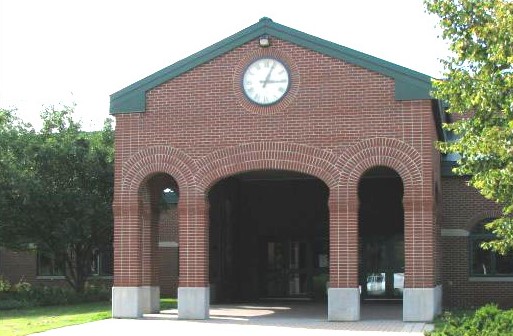
Vassalboro Community School (contributed photo)
by Mary Grow
Vassalboro School Board members spent most of their May 16 meeting discussing the 2023-24 school calendar, and scheduled a special zoom meeting for May 22 to approve a final version, after Superintendent Alan Pfeiffer wrote up their revisions and ran them by staff members.
The main issue was professional development time, scheduled hours for staff to do workshops and training and work together on educational issues.
This past year has seen two early release days most months, days when students go home at midday so staff can meet in the afternoon. Principal Ira Michaud reported the most recent day had been used for a zoom workshop with an outside expert.
Alternatives to early release days include late start days (used in some other Maine school organizations, people said) or full days without students. Discussion tried to balance two objectives: maximizing staff time for cooperative work while minimizing inconvenience to parents.
Michaud emphasized that students benefit from the staff development time. The purpose is to share current information and ideas that make classroom teaching more effective.
Pfeiffer reported after the May 22 meeting that school board members unanimously approved the 2023-24 calendar. It will be shared with parents in mailings and posted on the school website, vcsvikings.com.
In other business May 16:
- Michaud reported after screening for next year’s prekindergarten and kindergarten classes, preliminary figures are 29 prekindergarten students and 39 kindergarten students.
- Pfeiffer said plans for summer work include repointing and sealing the school building’s brick exterior, more security upgrades and adding acoustic tiles to reduce noise in the cafeteria.
- Michaud said third-graders won this spring’s penny-collecting contest. The Student Council voted to use the about $400 collected to buy larger national and state flags for the flagpole in front of the school.
Another thought students had was to replace the worn-out slide on the playground, but Michaud said a new slide would cost between $6,000 and $10,000. He’ll keep the need in mind and hope to find money.
- Board members approved Mia Sargent as the new art teacher and Joel Estes, who has been a substitute teacher, as an Educational Technician III.
Michaud said Sargent spent a year becoming a credentialed art teacher, after eight years’ experience as an elementary-school classroom teacher. She succeeds Sue Briggs, one of the two Vassalboro Community School long-timers retiring next month; kitchen manager Mary Dumont is the other.
Pfeiffer and Michaud praised VCS staff for their hard work as school enters “the new normal” after the disruptive covid years.
This year’s eight-grade promotion is scheduled for 6 p.m., Monday, June 12, at the China Lake Conference Center, on Neck Road, in China.
After the special May 22 meeting, the next regular Vassalboro School Board meeting is scheduled for 6 p.m., Tuesday, June 20.
Board members set their annual summer workshop for 5 p.m., Tuesday, Aug. 18, to be followed by the summer school board meeting at 6:45 p.m.
Interesting links
Here are some interesting links for you! Enjoy your stay :)Site Map
- Issue for July 3, 2025
- Issue for June 26, 2025
- Issue for June 19, 2025
- Issue for June 12, 2025
- Issue for June 5, 2025
- Issue for May 29, 2025
- Issue for May 22, 2025
- Issue for May 15, 2025
- Issue for May 8, 2025
- Issue for May 1, 2025
- Issue for April 24, 2025
- Issue for April 17, 2025
- Issue for April 10, 2025
- Issue for April 3, 2025
- Issue for March 27, 2025
- Issue for March 20, 2025
- Issue for March 13, 2025
- Issue for March 6, 2025
- Issue for February 27, 2025
- Issue for February 20, 2025
- Issue for February 13, 2025
- Issue for February 6, 2025
- Issue for January 30, 2025
- Issue for January 23, 2025
- Issue for January 16, 2025
- Issue for January 9, 2025
- Issue for January 2, 2025
- Sections
- Our Town’s Services
- Classifieds
- About Us
- Original Columnists
- Community Commentary
- The Best View
- Eric’s Tech Talk
- The Frugal Mainer
- Garden Works
- Give Us Your Best Shot!
- Growing Your Business
- INside the OUTside
- I’m Just Curious
- Maine Memories
- Mary Grow’s community reporting
- Messing About in the Maine Woods
- The Money Minute
- Pages in Time
- Review Potpourri
- Scores & Outdoors
- Small Space Gardening
- Student Writers’ Program
- Solon & Beyond
- Tim’s Tunes
- Veterans Corner
- Donate


